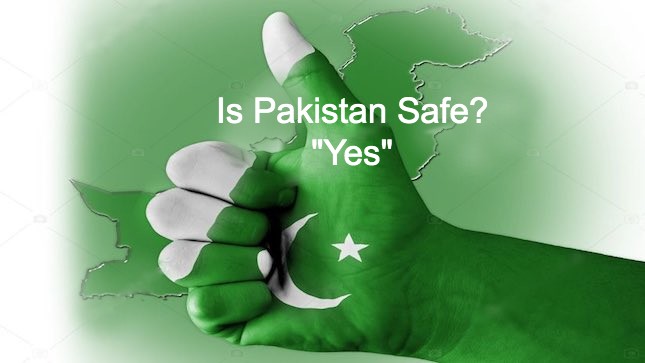Pakistan has made substantial strides in enhancing its safety and security situation, making it increasingly safe for both local residents and tourists. While the country, like any other, has its share of challenges, the overall safety landscape has notably improved in recent years. Tourists from around the world have been enjoying their visits to Pakistan in a more calm and secure environment.
Table of Contents
Safety & Security Landscape of Pakistan
Instances of violent crimes are rare, and the probability of encountering such incidents as a tourist is low. Petty crimes may occur in certain areas, as is the case in many places, but these incidents should not deter visitors from exploring the rich culture, history, and landscapes that Pakistan has to offer. It’s recommended for travelers to stay informed about the local situation, follow government advisories, exercise general caution, and respect local customs to ensure a safe and enjoyable experience in Pakistan.
Safety In Punjab
Punjab, as the most populous and developed province in Pakistan, generally offers a safe environment for tourists. However, like in any bustling urban area, there’s a possibility of petty theft in crowded places, particularly in cities like Lahore. Road safety concerns due to heavy traffic in metropolitan regions should also be considered.
Staying informed about local news, securing belongings, and using reliable transportation can help ensure a safe experience while exploring this vibrant region of Pakistan and its diverse attractions.
Safety In Sindh
Sindh, including its vibrant city Karachi, presents both safe and potentially risky areas for travelers in Pakistan. While Karachi boasts attractions, there’s a need for caution due to a risk of petty theft and bag snatching in crowded markets. Travelers should exercise care with their belongings and avoid openly displaying valuables. Moreover, some tourist spots might have individuals offering unofficial tours or services, which could lead to scams.
Travelers are advised to exercise caution when interacting with strangers offering unsolicited assistance to ensure a safe visit to this region of Pakistan.
Safety in Khyber Pakhtunkhwa (KP)
Renowned for its breathtaking mountain landscapes and rich cultural heritage, Khyber Pakhtunkhwa in Pakistan offers adventure opportunities alongside specific risks. Treks and outdoor activities can be exhilarating yet require caution to ensure safety.
Travelers are encouraged to follow local advice while embarking on hikes and stay informed about weather conditions. Given its proximity to certain border regions, travelers should prioritize staying informed about security situations and heeding government advisories for a safe exploration of this province of Pakistan.
Safety In Balochistan
With its vast deserts and rugged terrain, Balochistan in Pakistan offers unique experiences alongside potential risks. Some areas have experienced security concerns due to insurgency, making it crucial for travelers to stay informed about the current situation and follow government advisories. Remote areas might have limited infrastructure, and road conditions could be challenging.
It’s recommended to travel with reputable tour operators and seek local guidance before venturing into less-touristed regions. While Balochistan’s natural beauty is captivating, travelers should prioritize their safety and make informed choices to ensure a safe visit to this region of Pakistan.
Safety In Gilgit-Baltistan
Renowned for its awe-inspiring mountain vistas, Gilgit-Baltistan in Pakistan provides a safe haven for trekkers and adventurers. While the region is generally safe, the challenging terrain necessitates cautious trekking practices. Rapid weather changes in mountainous areas require preparedness to ensure a safe journey.
Given its proximity to certain border areas, travelers should stay updated about security conditions and adhere to government advice for a secure exploration of this remarkable region of Pakistan.
Safety In Azad Jammu and Kashmir
Azad Jammu and Kashmir’s tranquil landscapes attract travelers seeking a safe and peaceful getaway in Pakistan. Although the region is generally peaceful, travelers should be mindful of road hazards due to hilly terrain. Changing weather conditions require adequate preparation to guarantee a safe and enjoyable exploration.
Proximity to border areas emphasizes the importance of staying informed about security situations and heeding government advisories for a secure visit to this region of Pakistan.
These descriptions provide a comprehensive understanding of the potential risks and considerations for safe travel in various regions of Pakistan.

